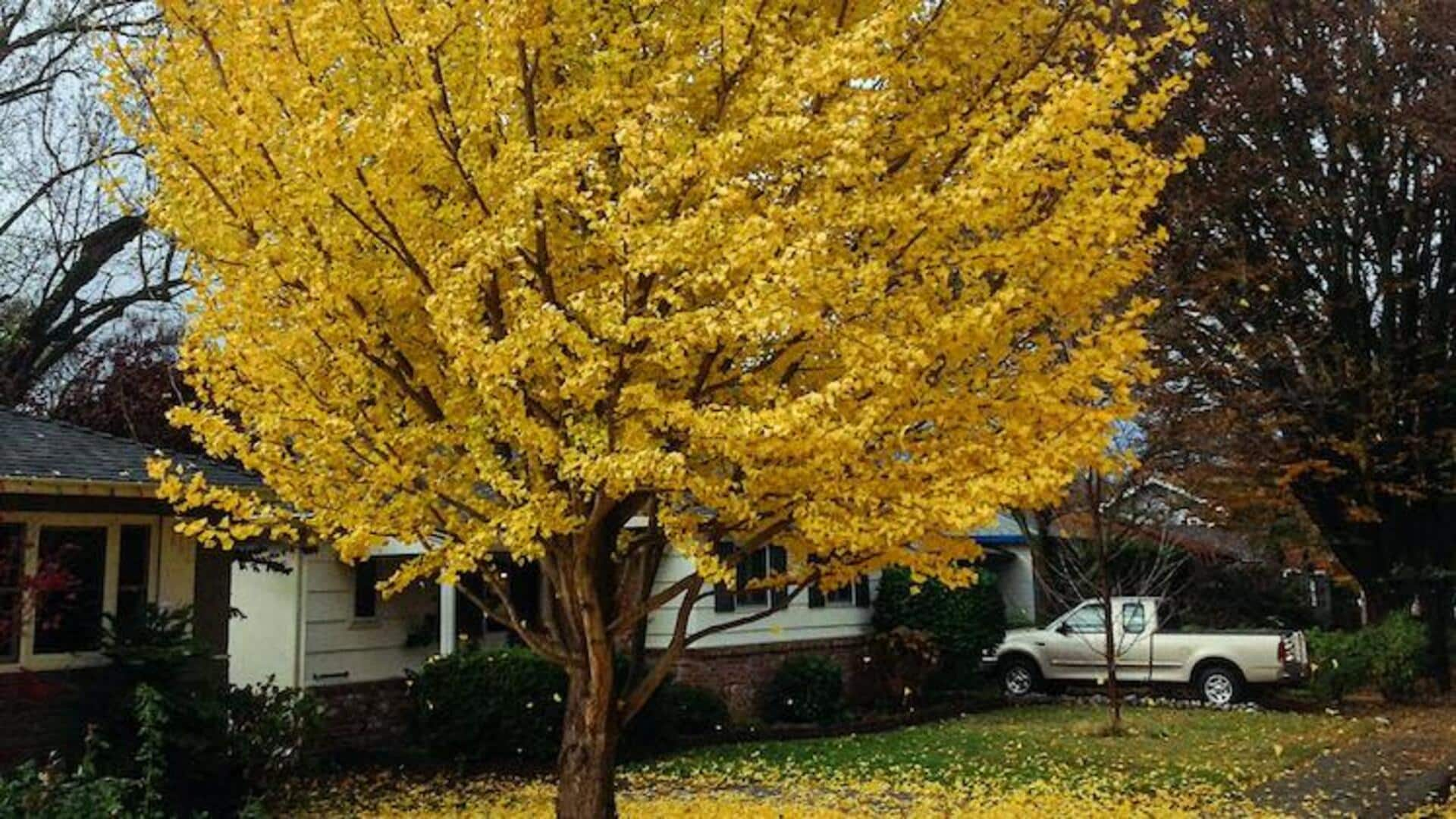
How to cultivate ginkgo trees at home
What's the story
Ginkgo trees, known for their hardiness and unique fan-shaped leaves, have long served as a symbol of strength and perseverance. These prehistoric trees hail from China and possess an exceptional ability to survive for millennia. Planting ginkgo trees in your garden not only adds a touch of elegance but also connects you with the ancient world. Read on for five tips to cultivate healthy and beautiful ginkgo trees.
Location
Selecting the right location
Ginkgo trees prefer full sun to partial shade. They aren't too fussy about soil type as long as it's well-drained. In terms of location, make sure it's a roomy one! Ginkgo trees can reach heights of 80 feet and widths of 40 feet. Steer clear of planting them too close to sidewalks or driveways. Their roots can cause damage to the pavement.
Watering
Watering wisely
Young ginkgo trees require regular watering to develop a strong root system, but they become very drought-tolerant once established. For the first two years after planting, you should water your ginkgo tree deeply once a week, particularly during dry spells. After this initial period, they typically only need extra watering during extended droughts. So, they get easier to care for as they grow!
Fertilizing
Fertilizing fundamentals
Ginkgo trees need very little fertilization. A balanced fertilizer, such as a 10-10-10 blend, applied in early spring is enough to promote their growth. Spend $5 on fertilizer per inch of trunk diameter at breast height. It is important not to over-fertilize, as this can create an imbalance, favoring leaf growth at the expense of root development, which is detrimental to the tree's overall health.
Pruning
Pruning practices
Pruning is crucial for young ginkgo trees as it helps them establish a strong structure. You should remove any dead or broken branches in late winter or early spring before the new growth starts. Once the tree reaches maturity, it requires minimal pruning. You only need to remove any branches that could potentially be hazardous.
Pest management
Pest and disease management
Ginkgo trees are highly resistant to pests and diseases, which is why they are a great choice for hassle-free landscaping. While they can occasionally be affected by leaf spot or aphids, these issues are typically minor and won't harm the tree significantly. Just keep an eye on your tree and if needed treat with suitable organic or chemical treatments.